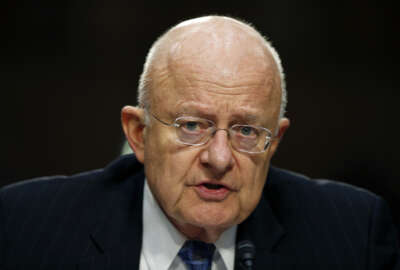

President Barack Obama signed an executive order Jan. 17, which sets the governance process and suitability standards for agencies and the population of federal...
In a last-minute move by the White House, the Obama administration codified many of the conversations it started in recent years about the federal security clearance process and the standards that agencies should use to measure an employee’s trustworthiness and suitability to serve in government.
President Barack Obama signed an executive order late Tuesday afternoon, which amends the governance structure and processes for issuing federal security clearances, as well as suitability and fitness status for employment.
The order more clearly outlines the Office of Personnel Management’s responsibilities in this process.
OPM will set the minimum adjudication standards for determining whether a person is suitable for federal employment, but agency heads retain the discretion to set criteria for contractors, the order said.
The OPM director will also now serve as the executive credentialing agent. Under this role, the OPM director will write standards for investigations, re-investigations and continuous vetting to determine an employee’s eligibility for receiving a personal identity verification (PIV) credential, among several other responsibilities.
The order ties up “loose ends” on several pieces of the administration’s efforts to modernize the security clearance and suitability review process, said Charlie Sowell, senior vice president for national security and cyber solutions at Salient CRGT and a former senior adviser to the Director of National Intelligence.
It also codifies the work that the National Background Investigation Bureau (NBIB), OPM and Defense Department have already begun to develop and modernize security clearance IT systems.
Federal tools and systems should “keep pace with technological advancements, regularly integrating current best practices to better anticipate, detect and counter malicious activities and threats posed by external or internal actors who may seek to do harm to the government’s personnel, property and information,” the order said.
Specifically, it establishes the NBIB as the government entity responsible for facilitating and overseeing clearance and adjudication standards.
“To help fulfill these responsibilities, there shall be a primary executive branch investigative service provider whose mission is to provide effective, efficient and secure background investigations for the federal government.”
Sowell said he sees that statement as the President’s attempt to solidify the NBIB’s position for the future.
The order also clarifies much of the conversation that the administration has had on continuous evaluation and vetting.
“Executive branch vetting policies and procedures shall be sustained by an enhanced risk management approach that facilitates early detection of issues by an informed, aware and responsible federal workforce, results in quality decisions enabled by improved vetting capabilities and advances government-wide capabilities through enterprise approaches,” the order said.
Specifically, the order later defines “continuous evaluation,” a statement that may set the stage for government’s push to expand continuous evaluation efforts in the future.
“CE leverages a set of automated record checks and business rules to assist in the ongoing assessment of an individual’s continued eligibility,” the order said. “CE is intended to complement continuous vetting efforts.”
In addition, investigative agencies will control the reports, information and other investigative materials that develop during the vetting process, the order said. This is an important step, Sowell said, because it sets the standard that agencies begin to share information with each other.
“It is absolutely critical to have systems of record notices that allow for certain information to be performed by the investigative service provider and by the customer agency, because up until now, conflicting guidance has hindered the government’s ability to do some data sharing, research and innovation,” he said.
In an administration marked by Aaron Alexis and the Navy Yard shooting and Edward Snowden, leaders in the security clearance space have spent several years talking about these issues.
The administration spent 2016 standing up the National Background Investigations Bureau, the new agency tasked with leading the overhaul.
In September, the Security Executive Agent and Suitability Agent issued a new memo that sets up business rules explaining how the new IT system will make most decisions on secret and top secret level cases.
Yet Obama’s order provides more detail and clarity about the standards it would like to see agencies use when determining suitability and fitness for its employees and contractors who hold secret and top-secret security clearances.
And though OPM certainly has some new responsibilities, the executive order uses new definitions and descriptions rather than setting several pieces of brand new policy, Sowell said.
“They’ve added some important words: ‘secure’ and ‘timely,'” and that’s something you see throughout the rest of the document,” he said.
Including those words and redefining certain terms codifies the administration’s push toward modernization — and emphasizes clear standards that agencies will use to create and retain a trusted workforce.
Copyright © 2025 Federal News Network. All rights reserved. This website is not intended for users located within the European Economic Area.
Nicole Ogrysko is a reporter for Federal News Network focusing on the federal workforce and federal pay and benefits.
Follow @nogryskoWFED


